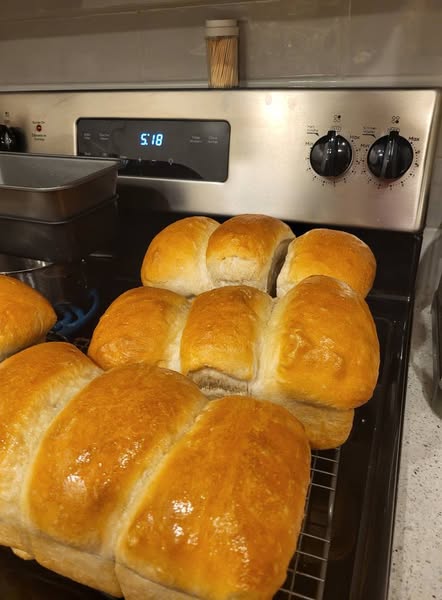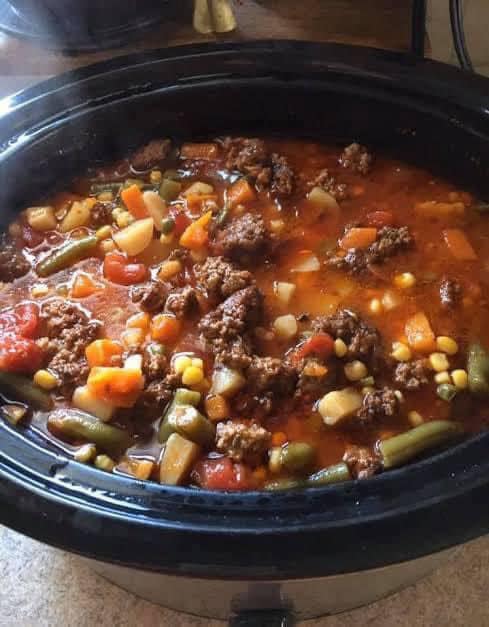Homemade Bread
Newfoundland bread is a beloved part of traditional Newfoundland cuisine. This hearty, slightly sweet bread is rich in history and perfect for everything from a cozy breakfast to a tasty addition to any meal. It’s wonderfully simple, requiring just a few ingredients that you probably already have in your pantry. The soft texture, combined with the slight sweetness, makes this bread a favorite for many.
In this recipe, I’ll walk you through the steps to make this Newfoundland bread from scratch. Whether you’re from Newfoundland or just curious to try something new, this bread will warm your kitchen and fill your home with delicious smells.
Recipe Overview
- Preparation Time: 10 minutes
- Resting Time: 1 hour (for dough to rise)
- Cooking Time: 30 minutes
- Total Time: 1 hour and 40 minutes
- Servings: 8-10 servings
- Difficulty Level: Easy
Ingredients
- 3 ½ cups (440g) all-purpose flour, plus extra for dusting
- 2 teaspoons baking powder
- ½ teaspoon baking soda
- 1 teaspoon salt
- 2 tablespoons sugar
- 3 tablespoons unsalted butter, cold and cut into small pieces
- 1 ¼ cups (300ml) milk, plus more if needed for brushing
- 1 egg, for brushing (optional)
Equipment Needed
- Mixing bowls
- Wooden spoon or spatula
- Rolling pin
- Baking sheet
- Parchment paper or greased baking tray
- Knife (to score the bread, optional)
Instructions
Step 1: Preheat the Oven
Start by preheating your oven to 375°F (190°C). This will ensure that the bread bakes evenly and gets a lovely golden crust.
Step 2: Prepare the Dry Ingredients
In a large mixing bowl, whisk together the flour, baking powder, baking soda, salt, and sugar. This mixture will provide the structure and lightness to your bread.
Step 3: Cut in the Butter
Add the cold, cubed butter into the dry ingredients. Use your fingers or a pastry cutter to cut the butter into the flour mixture until it resembles coarse crumbs. The cold butter will help create a flakier texture in the finished bread.
Step 4: Add the Milk
Slowly pour the milk into the dry mixture, stirring gently with a spoon or spatula as you go. Keep mixing until the dough begins to come together. You want a soft, slightly sticky dough. If the dough is too dry, you can add a little more milk, one tablespoon at a time, until it reaches the right consistency.
Step 5: Knead the Dough
Once the dough has come together, turn it out onto a lightly floured surface. Knead it gently for about 2-3 minutes. This will help to develop the dough’s structure, but be careful not to overwork it. You want the dough to remain soft and light.
Step 6: Shape the Dough
After kneading, gently flatten the dough with your hands or a rolling pin into a round shape, about 1-inch thick. You can make it as thick or as thin as you like, but the traditional Newfoundland bread is typically about 1 inch thick.
Step 7: Cut the Dough into Rounds (Optional)
To create a classic look for your Newfoundland bread, you can cut it into individual rounds using a sharp knife or a biscuit cutter. This is an optional step but adds a nice touch if you want smaller, individual portions. Alternatively, you can leave the dough as a large round and slice it into wedges after baking.
Step 8: Bake the Bread
Place your shaped dough onto a greased or parchment-lined baking sheet. If you like, you can brush the top of the dough with a little milk or beaten egg for a shiny, golden finish.
Bake the bread in the preheated oven for 25-30 minutes, or until the top is golden brown and the bread sounds hollow when tapped on the bottom. This is a key sign that the bread is fully baked.
Step 9: Cool and Serve
Once the bread is baked, remove it from the oven and let it cool on a wire rack for a few minutes. Newfoundland bread is best served warm with butter, jam, or your favorite spread. It also pairs wonderfully with soups, stews, and savory dishes.
Step 10: Enjoy!
Now that your Newfoundland bread is ready, slice it and enjoy it with a warm cup of tea or as a side with your favorite dish. It’s sure to become a favorite in your household!
Tips for Success
-
Use Cold Butter: For a tender, flaky texture, always use cold butter. It’s best if the butter is cut into small cubes before adding it to the dry ingredients.
-
Don’t Overmix the Dough: You want to mix the dough just until it comes together. Overmixing can lead to a dense, tough bread.
-
Add More Milk If Necessary: If your dough is too dry and doesn’t come together, add more milk a tablespoon at a time. The dough should be soft, but not too sticky.
-
Customize the Flavor: If you prefer a slightly sweeter bread, you can increase the sugar to 3 tablespoons. You can also add a handful of raisins or currants for a fun twist on the classic recipe.
-
Serve Immediately: Newfoundland bread is best enjoyed fresh. However, it can be stored in an airtight container for a couple of days. You can also freeze it for longer storage and reheat it when you need a quick treat.
Nutritional Information (Per Serving)
This recipe makes about 8-10 servings. Here’s an approximate breakdown of the nutritional content for one serving (based on 10 servings per loaf):
- Calories: 200 kcal
- Total Fat: 8g
- Saturated Fat: 5g
- Cholesterol: 20mg
- Sodium: 220mg
- Total Carbohydrates: 30g
- Dietary Fiber: 1g
- Sugars: 4g
- Protein: 4g
- Vitamin A: 6% of the Daily Value (DV)
- Calcium: 4% of the DV
- Iron: 6% of the DV
(Note: These values are approximate and may vary depending on the exact ingredients used.)
Conclusion
Newfoundland bread is a simple and delicious recipe that embodies the heart and soul of Newfoundland’s culinary heritage. Whether you’re baking it for the first time or have been making it for years, this bread is sure to impress. Its slightly sweet, soft texture makes it the perfect companion to a variety of meals. Serve it warm with butter and jam, or pair it with a hearty stew for a comforting meal. No matter how you enjoy it, Newfoundland bread is a true classic.
Happy baking, and enjoy the warmth of this homemade bread!






